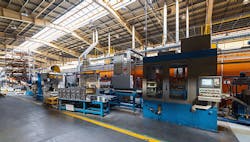Much like the different terms for equipment- or production- or machines-as-a-service, the business model is being envisioned by vendors and others in many different forms. Mark Ruberg, packaging industry manager for Beckhoff, says machines-as-a-service has the advantage of aligning industry interests. “The machine builder is only getting paid if product is leaving the door,” Ruberg says. “That aligns the end users and the machine builders to a certain extent on uptime, quality and speed of production.” This makes the machine builder more of a partner with end users, he says.
It could also encourage advanced technology adoption, if the return on investment increases production enough to cover the cost of new equipment. End users might also be more reticent to adopt new technologies without strong support from builders to train operators and keep up on maintenance, Ruberg says.
Also read: How to configure and implement automation technology
This article is a part of a series about equipment-as-a-service. Explore more about this topic in the following articles.
- Machines-as-a-service bolster packaging industry
- Equipment-as-a-service: A CapEx vs OpEx decision
- Hands-off utilities guaranteed
- Equipment, production and machines at your service
On the downside, it could expose the machine builder to additional liabilities, whether they’re financial- and safety-related. “There’s a financial liability shift to the machine builder,” Ruberg says, and questions about safety can present liabilities, if they aren’t addressed. “That is a topic that needs to be in the contract and discussed upfront,” he adds.
Ruberg believes this model would work best with packaging equipment that is not highly customized and able to be easily redeployed elsewhere, like a stretch wrapper, for example. “It's something that many manufacturing facilities need, so I've got a pretty high chance of redeploying that,” Ruberg says.
All the technology exists for machine controls and communication to collect the needed data and count product output. The more difficult part is in verification of those counts, Ruberg says. Third-party companies are doing this with blockchain and other technologies, and whatever process is used must be rigorous enough to survive the scrutiny of an audit.
Ruberg says there are also third-party companies springing up, which are investing in machines in order to offer them as a service to end users.
Rahul Garg, global vice president, industrial machinery business, at Siemens, echoes many of the same themes. Production-as-a-service provides more flexibility to users, which could be especially appealing to manufacturers that do small volume runs or want to serve regional markets where they don’t currently have a presence. “Especially in today’s world with all of the supply-chain issues, it becomes even more critical to have the flexibility and the availability of production in different parts of the world as needed, so this production-as-a-service provides a very good alternative where they can get something made without having to bear the startup cost or the infrastructure cost to get something going,” Garg says. He also sees other third-party entities outside of traditional industrial automation that take this idea and build a business around it.
Siemens does provide some rented equipment for hardware services geared around digital-transformation technology. “We are also providing a lot of our automation equipment as rentable equipment, where they can subscribe to our hardware services,” Garg says. One area where Siemens is driving the equipment-as-a-service model is with its edge suite of software and hardware, including renting the sensors and controllers needed to connect machines to the edge.
Garg doesn’t see this as-a-service model being used for inexpensive equipment, but it needs to be standard enough that production setup times are low. This standard equipment may also be used across different manufacturers with proprietary processes, especially a third-party company that enters the market to provide equipment-as-a-service, Garg says. While flexibility is key in the model, intellectual-property risks need to be addressed, and it may be that the model is not a good fit for end users that are innovating new processes and capabilities.
“The whole ability to monitor your production through the Internet of Things is certainly very important. That’s what is driving a lot of the ability for machinery manufacturers to offer this,” Garg says. That secure remote connection provides confidence that even off-site proactive and preventive maintenance can happen through data collection and analysis.
About the Author
Anna Townshend
Managing Editor
Anna Townshend has been a writer and journalist for 20 years. Previously, she was the editor of Marina Dock Age and International Dredging Review, until she joined Endeavor Business Media in June 2020. She is the managing editor of Control Design and Plant Services.

Leaders relevant to this article:


